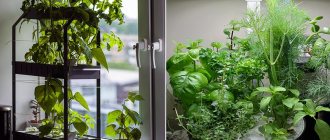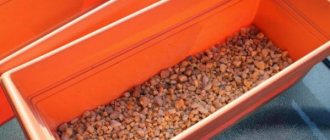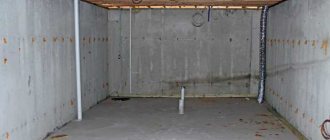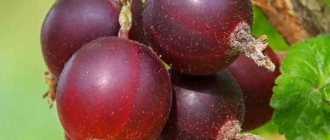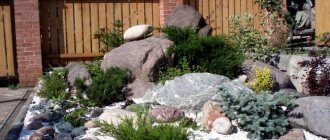Hydroponics is the growing of greens, vegetables and ornamental crops without the use of soil. Despite the lack of soil, the plants receive the necessary amount of nutrients, so they feel great and develop well.
Nutrition comes to the plants from a nutrient solution enriched with oxygen. It is easily absorbed by the root system, therefore, with this method of cultivation, crops grow faster and often produce larger yields than with the traditional method of cultivation. You can use the hydroponic method even in an ordinary city apartment.
What it is
Hydroponics is the technology of growing crops without soil.
The essence comes down to immersing the root system in a nutrient solution or water. In recent years, the method has gradually gained popularity throughout the world. Thanks to the hydroponics system, it is possible to solve the problem of shortage of quality land. Designs of different scales accelerate the growth and quality of grown crops. The structure is a kind of container with nutrient liquid, on top of which a grid or foam plastic with holes for seedlings is installed. A moist substrate (expanded clay, peat, coconut fiber, etc.) is distributed on the grid, where the seeds are poured. The substrate is chosen so that it does not support the proliferation of microorganisms, mold and bacteria. If polystyrene foam is used instead of a lattice, no substrate is needed - the roots of the seedlings are lowered into the holes so that they touch the water.
Nutrient layer system
The soilless growing method known as the nutrient layer system is becoming increasingly attractive to growers. It has a complex design with the installation of an aerator and pump. Beds – Trays with cells are located at the top of the hydroponic system. The installation is a separate container. It is placed at an angle.
At the bottom there is a container with a working solution. The pump constantly supplies liquid to the roots from the bottom of the system to the top container. The roots of the plant descend deep down, coming into contact with the nutrient medium. A small amount is required. Since the trays are at an angle, the solution constantly drains into the lower container.
When using the nutrient layer system, the mineral solution is economically consumed, and good aeration of the root processes occurs. Disadvantages include dependence on electricity. When the power goes out, plants are left without food. Large enterprises install the UGZK system.
View this post on Instagram
#greenhouse #greenhouse #hydroponics system
Posted by Jin Fu (@fujin007) Mar 17, 2022 at 7:56 am PDT
It is suitable for growing not only vegetable and berry plants, but also forage crops. In hydroponics you can cultivate cereals: wheat, barley, rice. proposes to equip greenhouses with both vertical and horizontal hydroponic systems.
For home hydroponics, purchase City Farmer growing equipment. The installation involves a multi-tier layout of trays.
They can be located vertically and horizontally, in one or several rows. The hydroponics complex consists of trays for plants, containers for nutrient solutions, a pump, and lamps.
Principal advantages and disadvantages
Taking into account the feedback from experienced farmers from different countries who have chosen hydroponic cultivation among other methods, the system has the following advantages:
- Valuable land is saved. When crops are grown hydroponically, there is no need to waste valuable fertile land; it can be used for more demanding plants.
- Space saving. The structure is built in several tiers, so it is possible to grow 5–10 times more agricultural produce per 1 m2.
- No watering is required, since the system receives water with the necessary nutrients.
- The product turns out clean, without lumps of adhering earth. The harvested crop can be immediately eaten.
- Insects and rodents cannot reach the crop.
- Crops are grown year-round with the installation of a microclimate and heating system.
- There is no need to remove weeds or weed the beds.
In addition to the advantages, the hydroponics system has disadvantages:
- Pesticides and nitrates. Some farmers are hesitant to use the new technology because chemicals need to be added to the nutrient solution. In rare cases, cultivation is carried out on water and minerals, but the quality and volume of the harvest is reduced. However, if you are afraid of pesticides in hydroponics, you should also treat growing vegetables and herbs in the classical way.
- Despite the fact that during the operation of the system the costs are not so high, the initial stage requires considerable investment. In addition, serious profits can be expected only when working in greenhouse conditions, and working in dampness and high temperature conditions is difficult.
What types of greenhouses are there?
A greenhouse is a protective structure designed for growing essentially all forms and types of plants.
But there is an additional detail that allows greenhouses to be called “greenhouses.” This is heating. According to their purpose and use, greenhouses can be divided into categories:
- Industrial (industrial greenhouses with an area of 3 hectares or more, intended for growing vegetables, flowers, etc.) and farm (greenhouses, the area of which varies from 0.2 to 2 hectares).
- There are greenhouses for breeding and reproduction work.
- The group of specialized greenhouses includes winter gardens, greenhouses, vegetarians and even shopping centers (Greenshop), for example, garden departments of OBI stores or the like.
- The last group includes greenhouses, the work of which we will analyze in more detail - phytotron-greenhouse complexes or greenhouse complexes operating using the method of low-volume hydroponics or industrial hydroponics.
Today, there are five generations of greenhouses, although some sources already talk about theoretical developments of the sixth generation.
The most widely used greenhouses in the world are fourth generation greenhouses. They have been built en masse over the past 20 years. It was there that the industry began to massively apply the technology of low-volume hydroponics. The main model of industrial greenhouses today is the multi-span block greenhouse type Venlo.
Source .
Block greenhouse type Venlo The area of greenhouse complexes can reach hundreds of hectares. In Russia, the largest greenhouse complex is the Yuzhny agricultural complex, which occupies an area of 144 hectares.
Source .
Agricultural complex "Yuzhny" Modern greenhouse complexes, as a rule, consist of several main blocks:
- administrative building,
- service area,
- warehouses of plant protection products (PPPs) and fertilizers,
- energy center,
- production units consisting of a water treatment department, a solution unit, a seedling department,
- greenhouse block (main and largest part).
Source . Seedling department
Source .
Energy center: general view and view of the roof on which the dry cooling towers are installed Block greenhouses of the Venlo type can have a span (distance between support columns) from 8 to 12.8 m, and a column height of 6 m.
Source . Structural elements of a block greenhouse
Main types of hydroponics
Existing types of hydroponics are classified according to the method of supplying the nutrient solution to the plants.
Type No. 1 - Wick system
Thin fabric strips stretch from the reservoir to the roots of the plants, through which water flows with useful substances dissolved in it. This method is not suitable for cucumbers, cabbage and other moisture-loving plants.
Type No. 2 - Periodic flooding system
A container under the pots with plants is filled with the nutrient solution, and then it is drained into a common tank. The frequency of flooding is set by a timer on the pump. Most hydroponic structures operate on this principle.
Type #3 - Water Culture System
Floating platform. Pots with seedlings are fixed on a platform with slots. The latter is installed on a container with water. The root system independently absorbs the required volume of liquid.
Type No. 4 - Drip irrigation system
The technology is the same as in classical farming. Excess water flows into a special tank.
Deep water culture system
To grow plants hydroponically, DWC (Deep Water Culture), a deep water culture system, is used. It is also called the floating platform method. DWC is suitable for crops that are capable of developing voluminous, long roots. Onions, tomatoes, peppers, cucumbers, cabbage, and garden herbs are grown in the deep-water culture system.
It represents the following diagram:
| № | Helpful information |
| 1 | a tray on which the seedlings are held; it can be metal, plastic or made of foam, which easily floats on the surface of the water |
| 2 | volumetric container containing a liquid nutrient medium |
| 3 | an aerator that forces air into the solution |
Hydroponics of deep water crops has good response from growers. Grow equipment is easy to maintain. It allows you to achieve good crop yields. Experts note some disadvantages of this type of hydroponics.
When there is a lack of air in the liquid, pathological microflora begins to develop, which leads to rotting of the roots. Pathologies can be caused by changes in the characteristics of the nutrient medium, increased or decreased acidity. The DWC technique requires regular testing of the solution for pH and electrolytes.
For home and industrial use, manufacturers offer the following designs: GrowDown; selected by the number of containers; AquaPot Duo, Trio, Quatro, XL4, XL8, Cutting Board for growing seedlings. For home use, an Oxypot 9 device from a Russian manufacturer is used. The equipment is installed in the greenhouse in miniboxes and growboxes.
What can be successfully grown hydroponically?
Theoretically, the hydroponic system is suitable for growing any plant, even shrubs and trees. In practice, the method is used only for planting herbs (parsley, dill, onions, basil and lettuce) and vegetables (tomatoes, cucumbers, radishes and legumes). Hydroponics is not used for growing beets, carrots and potatoes, since a full harvest is obtained only on real soil.
Products grown using new technology are usually marked with a special symbol. Hydroponic vegetables differ from classic vegetables in their brighter color, almost identical shape, and practically no smell. The peel and leaves are shiny and have a long shelf life.
Rating of quality hydroponic systems for 2022
| Name of hydroponic installation | Production | Crop area, sq.m. | price, rub. |
| Seed germinator 4-module Health Treasure X4 | Russia | 0.16 | 2200 |
| AquaPot Trio hydroponic system | Russia | 0.12 | 6500 |
| Hydroponic installation Wilma Small4 11 l | Holland | 0.18 | 8251 |
| Hydroponic system Dutch Aero Complex 1m2 | France | 60 seats 0.24 | 44000 |
| Hydroponic installation Panda System Aero Box GHE | France | 40 seats 0.12 | 34000 |
| RainForest | France | 0.12 | 26000 |
| Ecogrower max GHE | France | 0.12 | 18000 |
| Aero Flo 10 GHE | France | 0.22 | 21000 |
| AeroFarm 3 GHE | France | 0.16 | 9500 |
| Cutting Board 27 GHE | France | 27 seats 0.12 | 7000 |
How to make a system yourself
Anyone can create innovative garden beds on their own property. To do this, you need to assemble a system or buy a ready-made one. For assembly you will need:
- container in which the nutrient solution will be;
- pots for plants (containers with drainage holes);
- pot filler (pumice, expanded clay, perlite, pebbles);
- pot clamps (foam and other materials that are not subject to rotting);
- hose;
- compressor;
- air sprayer;
- concentrate for nutrient solution.
Plastic bottles are often used instead of pots. If you cut the bottle crosswise, you can plant greens in the narrow part and pour water into the wide part. All elements of the system that will come into contact with plants are disinfected in a solution of potassium permanganate.
The substrate is poured into the container, leaving 1/3 free. On top is sphagnum. The pot is placed in a reservoir of water so that water flows to the roots and the moss is kept moist. The spent nutrient solution will drain into the tray.
The correct nutrient solution is prepared from filtered or settled water. Ready-made liquid fertilizers are added to it according to the instructions.
Wick
The simplest hydroponic system is the wick system. It is usually used for small plants, indoor flowers or greenery. As a rule, seedlings do not have a voluminous root system. The solution is supplied to it using a wick. The wick type of hydroponics assumes the following scheme:
- top tray with holes; containers with seedlings are placed in it;
- substrate with which the cups are filled; this is a drainage layer; plants are planted in it;
- lower tray with nutrient medium;
- a wick that connects the solution with mineral fertilizers to the substrate.
The wick is a thread made from fibers that conduct water well. Choose perlite thread or coconut fiber. It is strengthened in the substrate. The lower part hangs freely, lowered into the solution.
Water flows to the roots slowly, in a small volume. To ensure that the nutrient medium is well saturated with air, an aerator is connected to the device. The wick installation is easy to assemble with your own hands, but manufacturers offer the following products on the market:
- Aquapot – Easy2grow Kit;
- AQUbox Straight.
Recommended: How do GHE hydroponic systems work?
The wick hydroponic system is recommended for growing greens, violets and indoor flowers that do not have long root shoots. Mineral wool, perlite, and coconut shavings are used as a substrate. The wick will help maintain constant moisture in the material. Several threads are installed in one glass.
How to prepare your own solution and substrate
To prepare the solution and substrate, special equipment is required. You need to purchase hydropots - containers that are trays inserted into one another. Moreover, the internal system must certainly have holes through which the roots of the plant will pass. The external reservoir contains the working solution. It’s easy to make a hydropot yourself using plastic bottles as a base. They are cut in half, after which the upper part of the container becomes the inner pot.
To prepare the substrate, you need to stock up on gravel, pebbles, crushed stone, pumice or sand. All components must be thoroughly cleaned by sifting them through a sieve. Then the materials are placed in a solution of potassium permanganate and washed thoroughly. Plant seeds are planted in sand at the depth recommended for the variety, and then watered.
Typically, ready-made fertilizers are used in hydroponics. But each gardener chooses his favorite feeding option. The main thing is to follow the instructions for the drug, correctly calculating the concentration of the nutrient solution. Most often, 15 ml of the composition is diluted in 1 liter of water. Water the plants only with settled water at room temperature, changing the composition of the fertilizer once a month, taking into account the growth phase of the plant. An important feature of the hydroponic system is that an excess of mineral fertilizers is more detrimental to plants than their deficiency.
The nutrient solution should have an acidity between 5 and 6 pH. It becomes more alkaline when soda is added. If it is necessary to increase acidity, use acetic acid. The prepared solution should be stored in a cool, dark place.
Closed or open
In the industrial production of vegetables, berries and herbs, both closed and open hydroponic systems are used. Plants develop in a substrate that acts as drainage, holds the nutrient solution and distributes it evenly over the entire surface. Plant roots are located outside the substrate and come into contact with the liquid nutrient medium.
With open technology, the solution is supplied at a certain time, without stopping, it passes into the sewer. Using such hydroponics, garden greens are grown both at home and in industrial conditions. The technique has several disadvantages.
First of all, nutrient fluid is wasted irrationally. It must be prepared every time it is time to water. A drain is specially equipped for waste so that minerals do not pollute the environment.
When growing in closed hydroponics, the nutrient solution circulates in the system or is located in a special container. Throughout the growing season, the acidity and electrical conductivity of the liquid are measured. Add fertilizer or water if necessary.
It is recommended to update the nutrient medium after each growing season. Closed hydroponic technology is suitable for all plants. It is more economical and rational.
Rules for transplanting plants into hydroponics
Hydroponics helps you easily grow at home not only flowers, but also vegetables propagated by seeds or cuttings. Optimal conditions for transplantation occur when the plant is sufficiently strong and has developed a developed root system. If you repot plants too early, the weak roots may be damaged, causing the sprouts to become stressed, their growth will slow down, and in the worst case, the plants may die.
To do everything correctly, follow the following recommendations for replanting plants:
- Remove the entire plant from the pot and place its roots in clean water.
- Carefully wash off any remaining soil and rinse the roots with warm water.
- Straighten the root system, fix it vertically in the pot so that it does not touch the water.
- First, water the plant with clean warm water, and after a week - with a nutrient solution.
History of the method
Hydroponics dates back to the ancient world. Thus, scientists suggest that the famous Hanging Gardens, located in Babylon, were grown according to the principle of hydroponics.
The word itself came to us from Ancient Greece. Translated, it means “working water.” Aristotle was the first to describe the process of hydroponics. It was he who came to the conclusion that plants need minerals and other chemical elements to grow well.
Hydroponics came to Russia during the Soviet era. Soviet scientists Pryanishnikov and Timiryazev actively grew plants using various chemical compositions. Since that time, the method has taken root in our country.
Tips for using at your summer cottage
Every summer resident wants to get a bountiful harvest for himself and for sale. But to achieve such results, you need to invest in the construction of a hydroponic structure and learn how to use the new technology correctly. The operation of the system is as follows:
- Plant seeds are first germinated in the soil. Young shoots with soil are removed from the pots and immersed in a bucket of water heated to room temperature. The roots are carefully cleaned of soggy soil and washed under low pressure of water.
- For planting, seedlings with the strongest and thickest roots are selected. The roots are lowered into pots, covered with filler and the containers are fixed in place so that the bottoms of the pots are immersed in the nutrient solution to a depth of 1–2 cm. The roots should not be in the solution, the liquid rises through the capillaries of the filler.
- The plants are watered with clean water for a week while they adapt to their new location. Next, a nutrient solution is supplied to the root system.
- The pump is turned on for 4–8 hours daily. The amount of solution in the common tank is maintained at the required level by adding water every day. The solution is completely changed at least once every three months.
- The acidity of the working solution is maintained at 5.6. The pH level is determined using a special device, but if you don’t have one at hand, an aquarium water tester is suitable.
- Grown plants need to be tied with twine, since they do not have a rigid fixation, like in the ground. To automate the process of supplying the solution to the roots, the pump is connected to a timer.
Hydroponics has shown itself best in floriculture. You can make the design yourself from scrap materials.
How to grow tomatoes in protected ground: basic steps
The first thing you need to start with is choosing the right hybrid for growing.
Basic requirements for hybrids for cultivation in protected soil: they must be highly productive, early ripening, with a complex of disease resistance (ToMV; Ff 1,2,3; V; F 1,2; On). The fruit sets well in low light conditions and must have high commercial quality, be uniform in size and shape, tasty, high-yielding and suitable for transportation. Having chosen hybrids, you need to prepare all the premises and equipment for growing. In addition to the usual cleaning after previous plants, treatment is carried out against fungal and bacterial infections, as well as viruses that may have appeared earlier. For example, the system and tanks for the mother solution can be washed with a 5% solution of the Virkon S preparation, plastic seedling cassettes are soaked in a 1% solution of the Virocide preparation, and, of course, after all procedures, the equipment is washed with clean water.
After all stages of preparation, we proceed directly to cultivation.
To do this, we place small “plugs” of mineral wool into the cells of the seedling cassette and saturate them with water. Place a tomato seed on the “cork” in each cell and sprinkle with a small amount of moisture-retaining material (perlite, vermiculite, etc.). Cassettes with seeds are installed on carts and rolled into chambers for germination. In specialized germination chambers, which are similar in appearance to industrial refrigerators, conditions (high temperature and humidity) are established that speed up the process of seed germination. The grown and strengthened plants from the germination chamber, together with the cork, are moved into mineral wool cubes, which in turn are placed on tables in the seedling compartment. To maintain humidity and supply nutrition to young plants, special tables that have a side are flooded with a nutrient solution, thereby saturating the cubes with plants. Source . Rock wool plug
Source . Standard 240 cell cassette with pre-installed plugs
Source . Mineral wool cube
Source .
General scheme for moving seedlings The entire process of growing seedlings takes place in a dedicated room (seedling department). After completion of the seedling development cycle, it is moved to the main block of the greenhouse to a permanent place, before which the temperature in the main block is maintained at 19°C for 4-5 days.
After moving the plants in cubes from the seedling compartment to the main block, they are placed on mats, and drip irrigation with a nutrient solution is supplied to each plant. A twine is stretched from each plant to the top of the greenhouse, which the plant will hold onto while it grows.
Here I want to make a small digression and talk a little about the technology of grafting tomatoes (cucumbers can also be grafted). The essence of grafting is to take two hybrids: one of them will produce tomatoes in large quantities, but its root system is weak and cannot reveal the full potential of the plant. Therefore, the root part is taken from another plant, and these two parts are connected. The grafting process occurs at an early stage of seedlings. It is very labor-intensive and can lead to large losses of plants that do not survive such an operation. Therefore, not many enterprises use this technology. Today there are already machines that allow this procedure to be carried out automatically, with the exception of feeding plants, but they have not yet become widespread.
Let's return to the life cycle of plants and the procedures and operations that are carried out during this period.
The height of the trellis to which the twine is tied for plant growth does not exceed 6 m, and tomato hybrids used in protected soil can grow up to 16-17 m. Accordingly, in order for the plant to have room to grow, the supply of twine on top of the trellis is slightly lowered, This lowers the entire plant, giving it additional space to grow upward. By the end of the growing season, a large number of twisted plant trunks accumulate at the bottom of the trays, from which all excess foliage has already been removed.
During the growing season, the plant is susceptible to various diseases, as well as the appearance of pests that can fly in during ventilation. To protect plants, both chemical preparations and biological means of protection are used, which include biopesticides and entomophages. To apply liquid plant protection products to leaves, many modern complexes use specialized equipment (in the video, the Qii-Jet TAV-342 robot sprayer).
To protect against insect pests, entomophages (predatory insects that do not harm plants, but eat insects harmful to us) are increasingly being used; they are purchased from specialized enterprises for breeding them. Special selection is also being carried out to improve the characteristics of such insects.
Source . Digliphus isaea
Source .
Predatory bug Macrolophus pygmaeus Entomophagous insects are used not only when the pest appears, but also for prevention. At the same time, in order to support the population of entomophages without natural food sources, special food is purchased, which also helps to increase viability and intensive development.
Having grown a healthy and strong plant, creating all the conditions for it and protecting it from diseases and pests, we may still not get a harvest. To set tomato fruit, it is necessary to pollinate its flowers. In open ground, bees do this, so for closed ground, bumblebees are specially bred, and the hives with them are placed in blocks of the greenhouse complex, where pollination must begin.
Source .
Hive for bumblebees To regulate the number of bumblebees in the hives, one of the two exits is blocked. But since each block of greenhouses can contain many hives and they are located at a sufficient distance from each other, this process may take time. To solve this problem, automatic hive closing systems are used, which respond to lighting or other parameters, and can also be controlled remotely.
In regions of the planet where there are difficulties with bumblebees, for a long time this had to be done manually. Now the Australian company Arugga AI Farming has developed a robot that, using artificial intelligence, independently recognizes flowers and pollinates them.
After the flowers are pollinated, fruits set and the ripening process begins. There are tomato hybrids with small clusters, in which the fruits ripen at approximately the same time, and this allows you to harvest the entire cluster. On other hybrids, the tomatoes in the bunch ripen unevenly: first, those that are closer to the main trunk of the plant, since nutrients reach them faster. Tomatoes are harvested by workers manually, and ripening is monitored by assessing the color intensity of the fruit.
To assess the potential yield and calculate the start time of harvesting in the near future, robots and artificial intelligence technologies will be used, which have now been developed and are undergoing a process of adjustment and improvement of accuracy (in the video - a robot for collecting piece tomatoes from Root AI; a robot for harvesting tomatoes from the startup Metomotion). Such robots also include the development of the Dutch company Berg Hortimotive Group - the Plantalyzer robot. He autonomously runs through the greenhouse and purposefully takes photographs of tomatoes. Vision's software and algorithms evaluate fruit maturity and convert the images into a reliable and accurate yield estimate. Such harvesting robots work many times slower than a human, but their accuracy approaches 100%. Moreover, they can work 24/7.
The harvested crop is placed in boxes on trolleys and transported by “locomotive” to the storage or packaging area.
Source .
Transportation of finished products to the storage area Automatic transport trolleys are also already used, which independently move between the greenhouse block and the warehouse.
Is it worth starting a hydroponic farm?
The popularity of hydroponics is only growing every year. This method of growing plants in an artificial environment greatly simplifies the labor-intensive process of caring for capricious crops. However, before you organize your hydroponic farm, it is worth calculating what the costs of its creation and maintenance will be. These costs necessarily include:
- purchase of equipment;
- payment for electricity;
- rental of premises and expenses for its arrangement;
- the cost of fertilizers, containers, seeds or seedlings.
You should definitely evaluate how developed the sales market is. The greatest demand for hydroponic products is observed in large cities.
Some potential buyers believe that growing plants using this technology worsens their taste. However, in the United States, hydroponics is officially recognized as one of the types of organic farming. The benefit of such a crop depends entirely on whether the plant's nutritional needs are met throughout the growing season.
Pros and cons of hydroponics
Continuous discussions “for” and “against” soil-free technology continue to this day. Fears that food grown with “chemicals” are dangerous to health are unfounded. We have been eating animal products for a long time, although animals are raised not in natural conditions, but in artificial ones. Without chemical additives, without fortified feed and without green feed obtained with the help of chemical fertilizers, it is impossible to obtain modern weight gain in livestock and poultry farming.
Advances in the development of a complex of fertilizers for soil-free technology make it possible to significantly increase labor productivity in agriculture. Development in industries related to the exploration of space, the world's oceans, deserts and ice areas is unthinkable without the production of plant products in a limited space, that is, without hydroponics.
Industrial soilless farms around the world produce a significant proportion of greens, both for human consumption and as animal feed. In the USA, almost the entire volume of salad crops is produced in hydroponic systems. Cities use wastewater treatment plants that contain all the substances necessary for plant growth. This direction is very important for wastewater treatment.
The new technology, using a closed cycle of circulation of the liquid medium, solves the acute problem of conserving water resources, making it possible to grow green products in the arid regions of the Earth.
Reduced labor costs
A huge advantage of hydroponics is the ability to computerize the entire process of growing crops. This significantly reduces labor costs. Many entrepreneurs are often forced to change something in their business in order to reduce this expense item. In hydroponics, labor costs are reduced by default.
The main process is controlled using computer programs and automation. Their tasks include:
- calculation of the concentration of fertilizers that will be supplied to the aqueous solution;
- control of air temperature and humidity in the room;
- turning ventilation on and off;
- watering plants.
All that is required from employees is the correct installation of hydroponic systems, planting seedlings, replanting plants, and harvesting.
Agree, labor costs are significantly lower than when growing crops in the traditional way on the ground.

